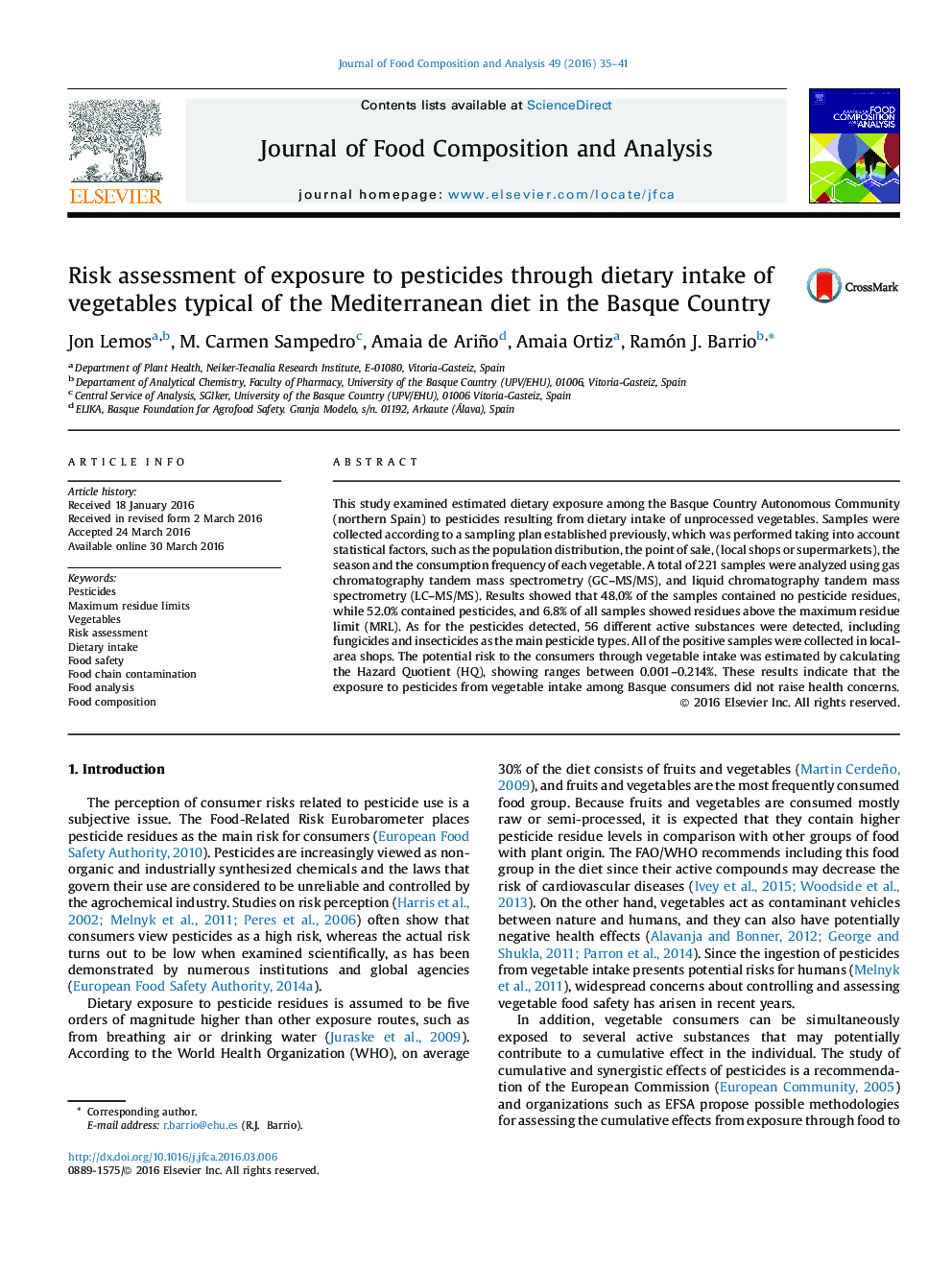| Article ID | Journal | Published Year | Pages | File Type |
|---|---|---|---|---|
| 1218056 | Journal of Food Composition and Analysis | 2016 | 7 Pages |
•Risk assessment of the exposure to pesticides through vegetable intake was made.•The study affects the Basque Country (North of Spain) with 2.5 million inhabitants.•Pesticide residues were detected in 52% of the samples.•Some 6.8% of the samples exceeded the MRL.•Hazard Quotient index (HQ) for occurring residues was very low in all cases.
This study examined estimated dietary exposure among the Basque Country Autonomous Community (northern Spain) to pesticides resulting from dietary intake of unprocessed vegetables. Samples were collected according to a sampling plan established previously, which was performed taking into account statistical factors, such as the population distribution, the point of sale, (local shops or supermarkets), the season and the consumption frequency of each vegetable. A total of 221 samples were analyzed using gas chromatography tandem mass spectrometry (GC–MS/MS), and liquid chromatography tandem mass spectrometry (LC–MS/MS). Results showed that 48.0% of the samples contained no pesticide residues, while 52.0% contained pesticides, and 6.8% of all samples showed residues above the maximum residue limit (MRL). As for the pesticides detected, 56 different active substances were detected, including fungicides and insecticides as the main pesticide types. All of the positive samples were collected in local-area shops. The potential risk to the consumers through vegetable intake was estimated by calculating the Hazard Quotient (HQ), showing ranges between 0.001–0.214%. These results indicate that the exposure to pesticides from vegetable intake among Basque consumers did not raise health concerns.
Graphical abstractFigure optionsDownload full-size imageDownload as PowerPoint slide
